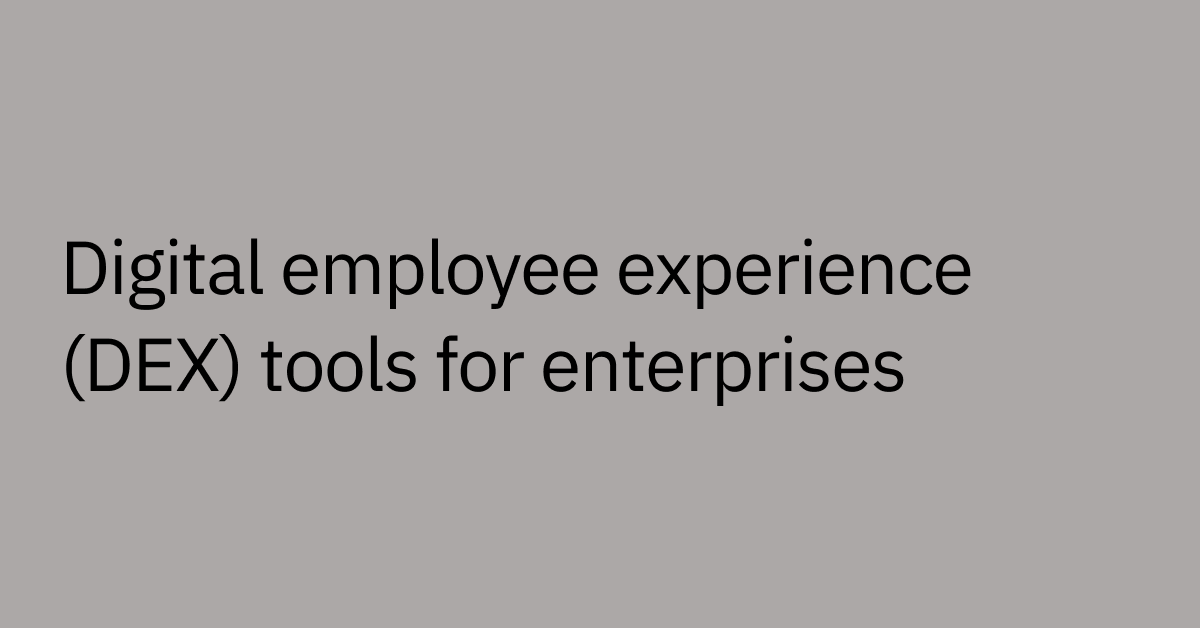Table of contents
Highlights
- Managed IT support outsources core functions like monitoring, patching, and help desk operations—but can also add complexity, cost, and visibility gaps.
- Rigid SLAs, delayed handoffs, and limited data access are managed IT challenges, which can slow resolutions and disconnect leaders from key operational insights.
- AI-driven automation now handles many managed IT tasks internally within your organization—detecting issues, resetting passwords, and routing requests instantly.
- Agentic assistants scale faster than vendors by resolving Tier 0–1 support autonomously while keeping data and oversight in-house.
- Moveworks delivers this agentic automation layer, enabling enterprises to provide 24/7 IT support, reduce ticket volume, and maintain greater operational control.
Organizations spend over $4,500 per employee every year on IT support — from help desk tickets to onboarding and device management. Yet despite that investment, problems like slow responses and inconsistent service remain a common headache.
Managed IT support services — outsourcing IT operations to a third-party provider — have long been viewed as a smart way to gain coverage, reduce internal strain, and meet service level targets. But modern AI solutions, including conversational assistants and automated workflows, can now also address many of those same needs faster and more flexibly.
The choice between managed service providers (MSPs) and AI isn’t necessarily black and white. Each has strengths — the key is figuring out which approach — or combination — best fits your business goals, budget, and internal capabilities.
What services do managed IT support services offer?
First things first: What is managed IT support services?
It refers to a broad set of technology functions that organizations outsource to external providers. They typically include:
- Network monitoring and management
- Cybersecurity and threat detection
- Data backup and disaster recovery
- Help desk support
- Software updates and patch management
- Hardware maintenance
- Strategic IT planning (sometimes offered through virtual CIO services)
Essentially, MSPs act as an extension of your internal IT team — or fully take on IT operations — by handling day-to-day tasks so your team can focus on strategic priorities.
The exact scope varies between providers, but most offer tiered service levels that align with your organization's size, complexity, and budget.
Benefits of managed IT support
- Free up internal teams. Outsourcing routine support tasks can provide major relief for your internal teams, letting them focus on higher-value strategic projects versus repetitive or tedious work.
- Ensure 24/7 system monitoring. Most MSPs provide 24/7 monitoring and support. This is a great way to make sure your systems can receive attention whenever issues arise — even outside normal business hours.
- Scale support without hiring. You can expand your support capabilities as your business grows without the complexity of hiring and training additional in-house staff.
- Avoid recruiting bottlenecks. Hiring and training new employees with the expertise you need can be a slow process. But when your IT support is outsourced to a third party, the MSP can manage staffing.
- Maintain predictable costs. Outsourcing to an external team can often provide more predictable expenses (usually a monthly or annual contract) compared to the variable costs of maintaining and expanding in-house support teams.
Learn how to scale IT with agentic AI and maintain full control over your operations.
Limitations of outsourced IT support
While managed IT support can be a great way to give your teams the round-the-clock support they need. But this approach comes with trade-offs. Here’s what to be aware of.
Visibility gaps create blind spots for IT leaders
Outsourcing can disconnect IT leaders from real-time data and trends that are important for strategic decision-making. Unless you're truly ingrained with the external partner, you don't really see what's breaking, why it's breaking, what's recurring, or where employee sentiment is dropping.
When support operations move outside your organization, it’s harder to identify patterns that might point to bigger systemic issues.
For example, let’s say 30% of your monthly help desk tickets relate to software provisioning issues for new employees during onboarding. If all these tickets are handled externally, that insight is lost. As a result, you lose the opportunity to streamline software provisioning upstream.
Outsourcing IT support may also introduce cyber threat risks. Managed IT services providers often rely on generic playbooks or have limited access to internal systems, which delays the detection and resolution of vulnerabilities.
But with an in-house IT team supported by artificial intelligence, enterprises can instantly be alerted to unusual activity and take immediate action — revoking access or alerting stakeholders without relying on an external support chain.
Cybersecurity threats require speed, coordination, and context that external vendors don't always provide with the same urgency as internal teams.
Rigid SLAs don't match business urgency
Service level agreements (SLAs) are designed to guarantee a minimum service level, but often fail to reflect the real-time urgency of internal business needs. A "resolved in 8 hours" clause doesn't really help right before a critical board meeting.
MSP contracts typically include escalation processes that add layers between urgent requests and resolution. What might be a simple fix for your internal team becomes a multi-step vendor handoff process.
Let’s go back to the example above of your executive getting locked out of their email right before a board meeting. For an internal IT team, the solution would be to simply reset their password on the spot. Problem solved in under two minutes.
But with an MSP, that same issue might require opening a ticket, waiting for triage, routing to the right support tier, and verifying identity all before someone can even initiate the password reset. Instead of a quick fix here, you have a 30-minute fire drill.
These more rigid frameworks often fail to account for your organization's unique priorities or the real-world urgency of business-critical situations.
Limited scalability and hidden costs
Managed IT support is often marketed as a predictable, fixed cost model. But in practice, costs tend to rise with ticket volume, SLA upgrades, scope changes, and contract extensions. These additional fees can balloon as your business grows or support complexity increases.
Between base fees, add-ons for specialized support, and unexpected charges for emergencies or integrations, your total spend can quickly exceed initial projections — especially as your business scales or support needs evolve.
Vendor quality variability
Before doing business, you need to thoroughly verify an MSP's track record with other organizations in your industry and scale. Reliable MSPs will be transparent about comparable organizations they’re working with and can provide references you can contact.
The quality of service varies significantly between providers, and even within the same provider across different service teams or time periods. Remember: What looks good in a demo may not translate to consistent daily operations.
Talent recruitment challenges
MSPs face the same competitive hiring environment that internal support teams experience. The growing need for more advanced skill sets that include network security, data analytics, AI, machine learning, and cloud services creates recruitment challenges across the industry.
Research from Information Week backs this up, finding that the tech sector is on the verge of a severe shortage of skilled professionals.
This IT skill gap is the difference between the skills employers are looking for and what the workforce actually has. It’s a much bigger issue than merely affecting individual companies — it impacts the global economy.
Even with outsourced support, you're still going to be affected by these industry-wide talent shortages, likely through reduced service quality, higher costs, and longer response times.
How automation delivers IT support at scale
AI-driven capabilities like automated monitoring, incident management, support, and workflows offer an appealing alternative to traditional outsourcing models. These systems present a vision of internal, automated support that's faster, smarter, and easier to control.
Automation platforms handle many of the same tasks as MSPs provide — but with greater speed, consistency, and visibility. For example, automation platforms can:
- Reset password directly in chat, 24/7: Employees use everyday language to request and receive immediate help.
- Provisioning of apps and tools based on role or department: New hires get access to the right tools.
- Surface knowledge based on employee intent: AI is able to understand context and delivers the most relevant information on spot.
This approach counters the assumption that only MSPs provide scale and always-on coverage. Well-designed automation can deliver both — without vendor complexity.
Automation also offers elasticity where pricing is tied to usage or outcomes rather than headcount. (For context, Tier 0 tasks are fully self-service — like password resets or access requests — while Tier 1 covers simple support issues that require minimal human intervention, such as basic troubleshooting or how-to questions.)
As AI resolves more Tier 0 and Tier 1 requests, costs shrink. Plus, there's no delay or negotiation required when scaling to support a new team, region, or app.
Coca-Cola Consolidated — the largest Coca-Cola bottler in North America — faced this exact challenge when their workforce tripled in just five years. Instead of scaling their IT team at the same pace, they used automation to handle repetitive support tasks like password resets and access requests.
The result? They maintained the same number of support agents while meeting growing demand and delivering faster, more seamless support.
Which solution fits your business needs
Choosing between managed services and AI automation comes down to understanding how each approach addresses your operational requirements:
- Human expertise vs. automation: Managed services give you human support with context-aware problem solving, while advanced AI-driven automation delivers consistent, scalable solutions that get better over time.
- Scalability and flexibility: Both solutions scale with business growth, but they adapt to changing needs differently. MSPs will often require contract modifications and resource allocation discussions, while AI automation adjusts automatically to increased volume and new use cases.
- Cost implications: Managed services typically involve predictable monthly fees that increase with scope and volume. AI automation often features usage-based pricing that becomes more cost-effective as efficiency improves.
Rather than AI assistants completely replacing MSPs, it's worth noting that MSPs and advanced AI assistants like Moveworks can often work far more efficiently together. MSPs are great for handling complex IT tasks like network management, cybersecurity strategy, data backup, and regulatory compliance, providing a well-rounded approach to IT support with human expertise.
Enterprise AI assistants, on the other hand, are ideal for automating repetitive L0/L1 tasks like user support, password resets, and data querying, by using machine learning and natural language processing (NLP) to enhance efficiency and scalability.
Ultimately, MSPs can deliver tailored IT management with a strategic touch, while AI assistants handle routine questions quickly and efficiently, boosting productivity and optimizing the employee experience.
Choose a model that scales with your goals
Intelligent automation offers the speed and scale of managed services without the vendor lock-in or handoff complexity. AI platforms help internal teams by fully handling the most repetitive IT support tasks without generating tickets.
The outcomes speak for themselves with reduced ticket volume, faster resolutions, and higher employee satisfaction, all without sacrificing control over your business operations.
Moveworks empowers enterprises to modernize IT support by addressing the root issues MSPs were hired to handle. Password resets, app access, and policy FAQs are all resolved directly in Slack, Teams, or email via AI.
- Address IT issues in seconds: Eliminate slow vendor queues and route-to-resolution delays by solving the most common support requests instantly through conversational interfaces.
- Stay in control: Gather insights from your existing IT systems and tools to drive ongoing improvements and cut down on unnecessary support requests, all while keeping clear visibility into your operations.
- Scale without overhead: Meet growing employee demand without expanding your help desk team or relying on fixed vendor contracts that may not align with your actual IT needs.
AI automation combines the best of both worlds: the thorough coverage and expert support of managed services with the control, transparency, and cost savings of handling things in-house.
Transform your IT support with AI automation and build a foundation for sustainable growth without relying on third-party vendors.



